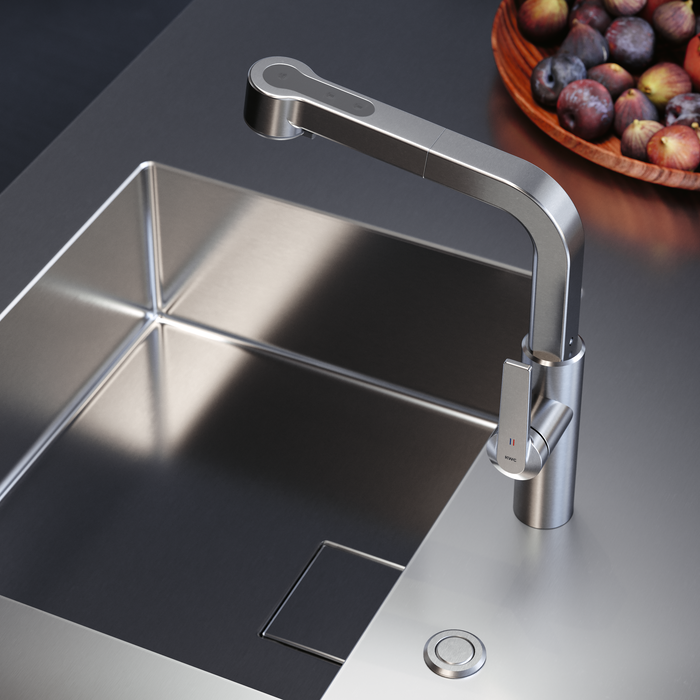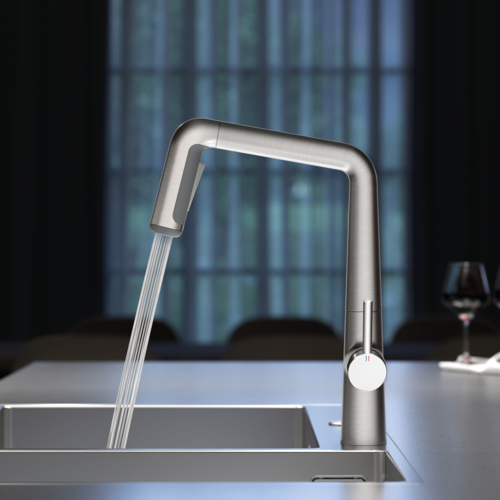
Swiss craftsmanship − 150 Years KWC
Since 1874 KWC has stood for inventiveness, an affinity for design, and supreme Swiss craftsmanship. Our story began 150 years ago in a small music box factory in Unterkulm.
THE FOUNDING OF KWC
Into the age of precision mechanics with a pioneering spirit
The gramophone was to blame. When it replaced the flourishing music box industry at the end of the 19th century, KWC opened up new lines of business. Instead of mechanical music boxes, the company now developed fittings.
KWC went on to use its expertise in precision engineering and foundry work to develop completely new, pioneering products, including fittings that were launched on the market from 1897 under the name “Gashähnli” (small gas tap). In 1906, KWC presented a fully equipped bathroom, while the factory in Unterkulm was thoroughly modernised: electrical lighting andelectric power units were introduced. Less than five years later, KWC was already supplying the luxury Ritz Hotel in Paris with its own line of fittings. In 1914, KWC won a gold medal at the Swiss National Exhibition and already employed 170 staff. The transformation from the music box industry to the fittings industry was complete.
From 1919, the speciality fittings company traded as the public limited company Karrer Weber und Cie: KWC. But who was behind KWC? The founding fathers Adolf Karrer and Eugen Weber, as well as the later partner Walter Luginbühl, were traditional entrepreneurs. Ulrich Weber remembers his grandfather with a “smouldering cigar and elegant watch”, which he “wore on a gold chain in his Giler bag”. As an entrepreneur, Eugen Weber (1862–1949) had a
flair for innovation, which led him to travel by ship to America around 1920 to learn about die-casting technology. After Adolf Karrer’s death in 1895, Weber took over the management of the company. The third member of the
team was Walter Luginbühl, Weber’s brother-in-law, who joined the company in 1897 and eventually became his successor as managing director. Grandnephew Ulrich Weber remembers: “His booming voice was unmissable; he occasionally dined on the train and is said to have entertained the entire dining car.”
Adolf Karrer, Eugen Weber and Walter Luginbühl were doers with a keen instinct for the zeitgeist and shaped the company with their pragmatism: close to the people, with technically sophisticated products and an appreciation for novelty and the opportunities of change, just as their contemporary Joseph Alois Schumpeter (1883–1950) described it, who, as an economist, spoke of “creative destruction” and of “dynamic entrepreneurs” who focussed on innovation and shaped the upswing accordingly. Pioneering spirit and perfection are still evident today in a large number of patented product developments that continue to shape the way we use water in the bathroom and kitchen.
The courage to change
In 1874, Adolf Karrer acquired a mill in Unterkulm and began manufacturing high-quality music boxes. Just one year later, the company already had 40 employees, the business was flourishing, a foundry was added, and the technology of the mechanical masterpieces was continually refined until the gramophone conquered the musical world in 1895 and sales of music boxes plummeted. Production ceased in 1902.
The courage to change
In 1874, Adolf Karrer acquired a mill in Unterkulm and began manufacturing high-quality music boxes. Just one year later, the company already had 40 employees, the business was flourishing, a foundry was added, and the technology of the mechanical masterpieces was continually refined until the gramophone conquered the musical world in 1895 and sales of music boxes plummeted. Production ceased in 1902.
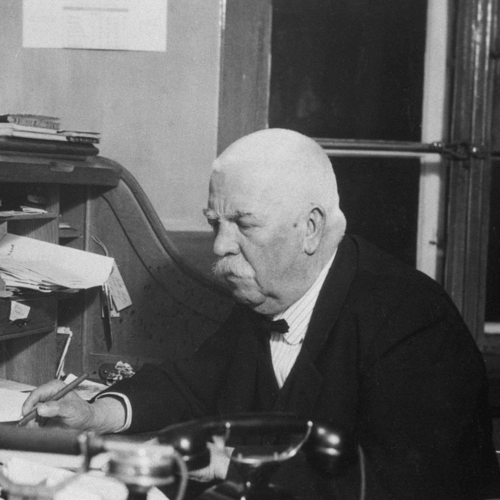
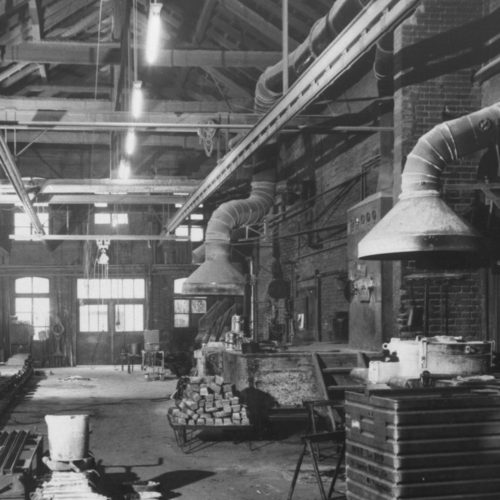
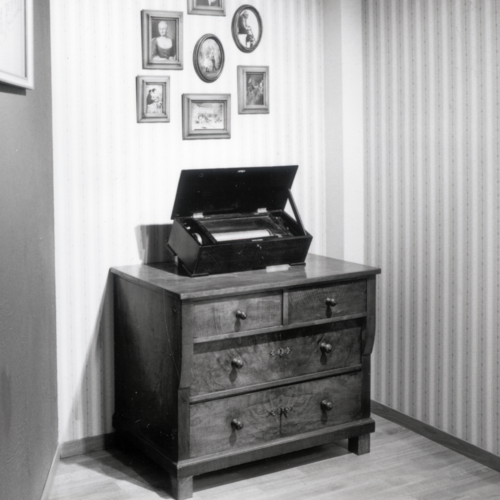
ON THE ROAD TO INTERNATIONAL SUCCESS
Milestones of the first 100 years
KWC’s innovative strength lies in its ability to combine pioneering technical innovations with perfect design. A brief tour of patents and products that have now become true classics.
Single-hole silver tap (1911)
An elegant tap that clearly set apart its components: the curved spout, the locking mechanism and the four-section wing tap were enhanced by the use of solid cast parts.This tap made of polished nickel silver (a coppernickel-zinc-alloy) marked a prestigious commission to furnish two luxury hotels: in Nice (the flamboyant “Negresco” on the Promenade des Anglais) and Paris (the legendary “Ritz”).
Neoperl (1954)
The NEOPERL water-saving mechanism, patented in 1954, achieved an incredible reduction of 75 per cent compared to conventional taps. A concealed nozzle gave the water flow a uniform shape and prevented splashing water. In 1959, the ingenious invention and its marketing were transferred to the new Hans Denzler & Co (now Neoperl AG). It was an innovation that is still an integral part of the tap today.
KWC NEODOMO (1982)
The legendary KWC NEODOMO lever mixer series soon became the best-selling tap line in Switzerland. With its groundbreaking combination of modern design, pioneering technology and simple function, it marked progress in a natural form – thanks to the ceramic disc cartridge developed in-house. Now a modern classic, the sixth edition still has its finger on the pulse.
Absolute world first
With its characteristically curved shape, the pull-out spray seemed to be waiting to be put to use. The contrasting black handle indicated where the pull-out could be operated, while the corresponding black push button invited the user to trigger a targeted jet of water with their thumb. This patented innovation, the first single-hole kitchen tap with pull-out spray (1957), was an absolute world first for KWC and opened up a new market segment.
Absolute world first
With its characteristically curved shape, the pull-out spray seemed to be waiting to be put to use. The contrasting black handle indicated where the pull-out could be operated, while the corresponding black push button invited the user to trigger a targeted jet of water with their thumb. This patented innovation, the first single-hole kitchen tap with pull-out spray (1957), was an absolute world first for KWC and opened up a new market segment.
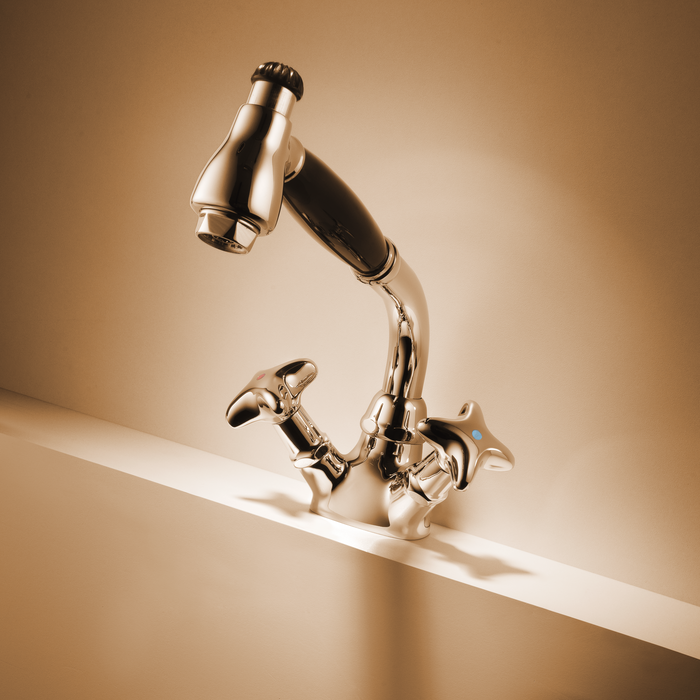
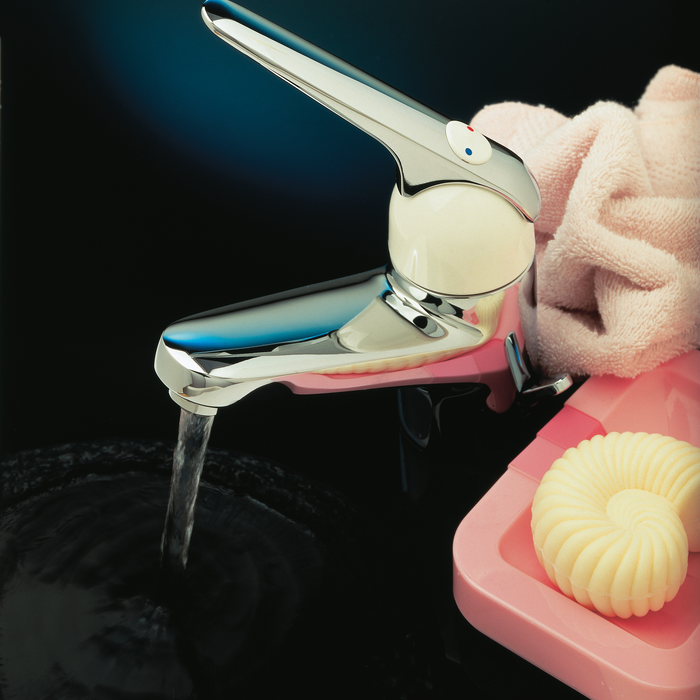
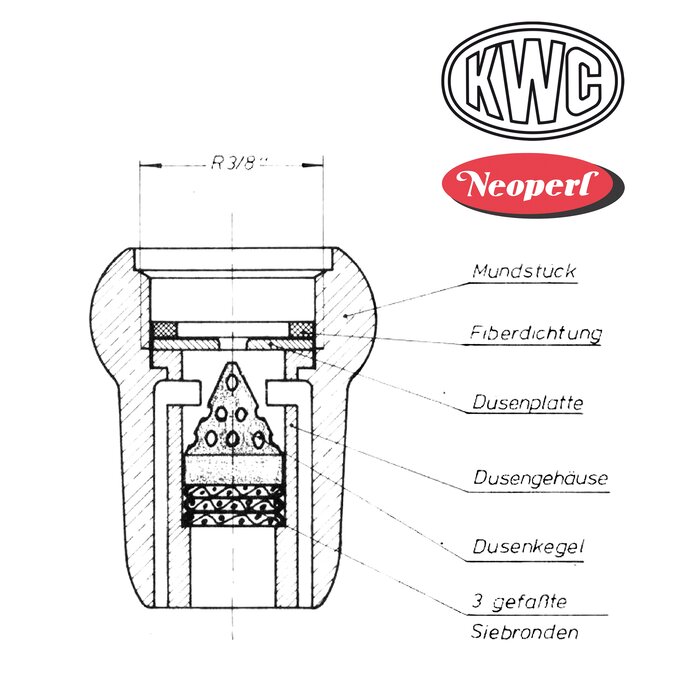
ALWAYS ONE STEP AHEAD
Innovations from 1995 to 2005
Purist design combined with state-of-the-art technology: this is the key to KWC’s inspiring user experience.
KWC TRONIC (1997)
The first automatic tap with infrared technology on the Swiss market sets standards with its sophisticated combination of technology and design.
KWC DISKO (2002)
The first Swiss stainless steel line in the bathroom. The water volume and water temperature are mixed at the
same level using a car tridge, enabling the unique design.
KWC EVE (2005)
Frequently copied, yet never equalled: the world’s first retractable and covered pull-out spout, particularly impressive with integrated LED light.
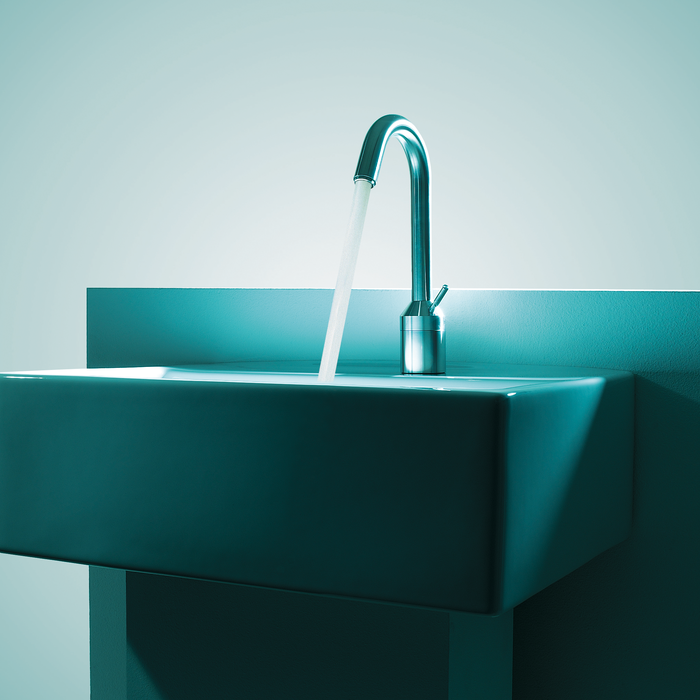
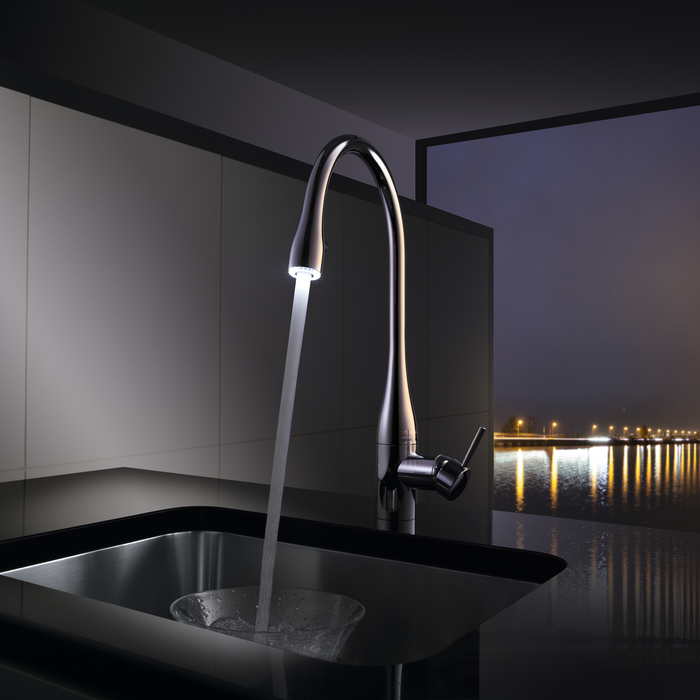
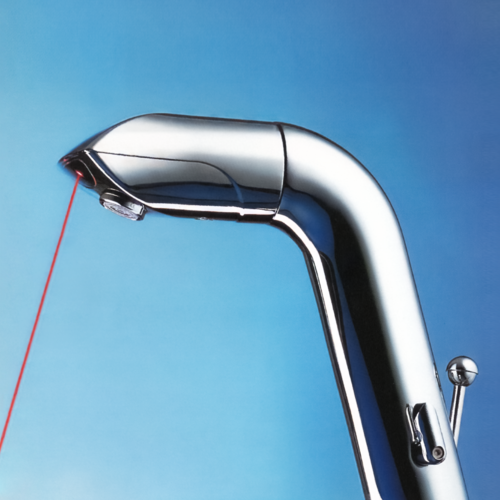
EXCELLENT DESIGNS AND MODERN TECHNOLOGY
Innovations from 2005 to 2015
Sustainable technologies and electronic control. We put our passion and enthusiasm into every one of our products.
KWC ONO HighFlex (2008)
Professional quality in the private sphere. The patented spring hose allows the self-supporting pull-out to spring back to its starting position. The operating lever made of medicalgrade steel with Diamolith™ coating impresses by being extremely robust and yet light at the same time.
KWC AVA with CoolFix (2010)
Durability and aesthetics represent what KWC stands for. The specially developed cabrio lever principle allows the lever to float gracefully over the fitting while also being very easy to clean. This special mechanism is still a distinctive hallmark of KWC to this day.
KWC ZOE touch light PRO (2015)
The unique KWC ZOE gets an electronic upgrade and becomes a multi-award-winning style icon. The integrated touch light PRO control directly at the base of the tap tak es user friendliness to a new level.
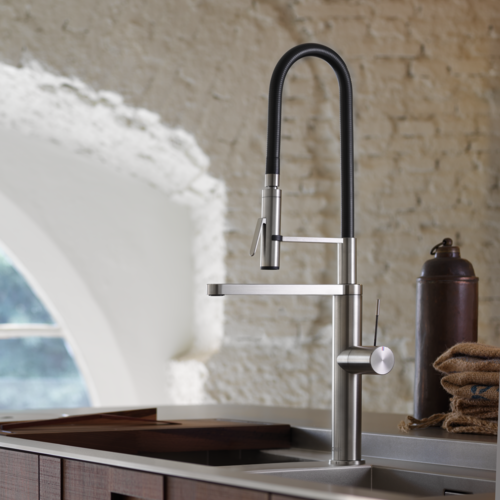
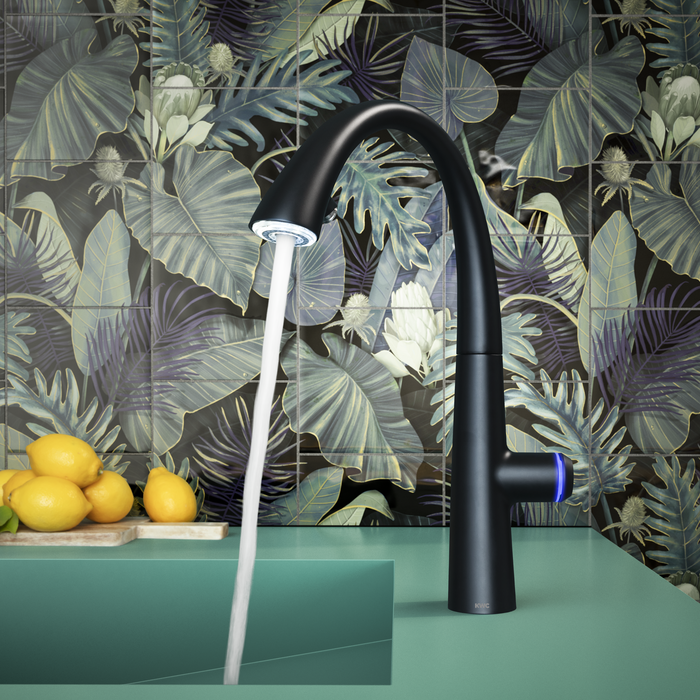
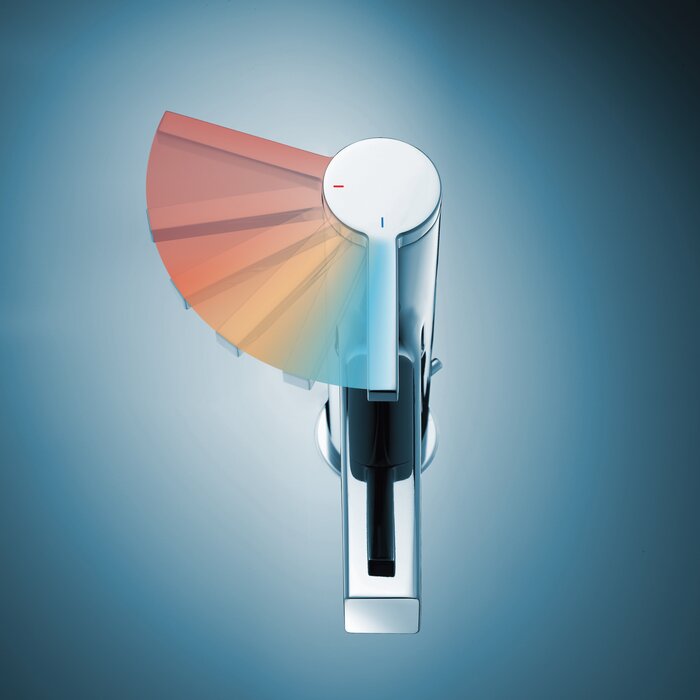
INTO THE FUTURE
Innovations from 2015 to the present
For more than 150 years KWC has stood for inventiveness, an affinity for design, and supreme Swiss craftsmanship.
KWC ERA (2018)
Iconic design: a revolutionary stainless steel forming process makes KWC’s slimmest stainless steel tap possible.
KWC DOMO E (2021)
The Swiss classic makes its debut in stainless steel. With its per fect transitions, the tap body is created using the stainless steel investment casting process. A stainless steel tap body made from a single cast.
KWC KIO (2022)
Everything in one hand: KWC KIO combines the demands of a professional kitchen with electronic control. Maximum ease of use paired with electronic sophistication.

